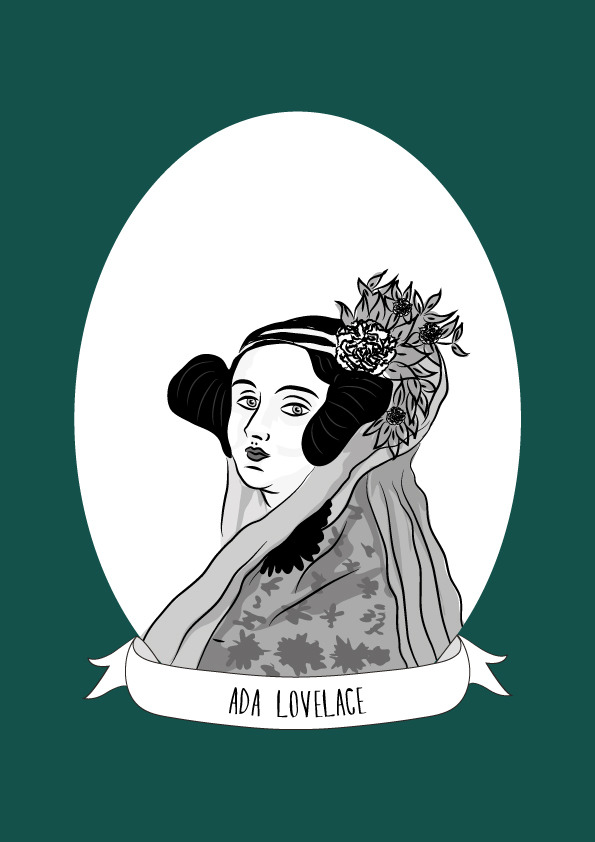Ada Lovelace was a British Analyst, Metaphysician, and Founder of Scientific Computing.
Lovelace was born Ada Gordon in 1815. Her father, George Gordon, Lord Byron and her mother Annabella Milbanke separated when she was a month old. A few months later, Lord Byron left England and never saw Ada again. Lovelace’s mother raised her under a strict regimen of science, logic, and mathematics so that she would not succumb to her father’s ‘poetic madness’. Lovelace was also forced to lie still for extended periods of time in the hope that it would help her develop self-control.
Lovelace was talented with numbers and language from an early age and was fascinated with machines, she poured over diagrams of new inventions of the Industrial Revolution that filled the scientific magazines. Lovelace was taught by William Frend, a social reformer; William King, the family’s doctor; and Mary Somerville, a Scottish astronomer and mathematician. Somerville was one of the first women to be admitted into the Royal Astronomical Society.
At the age of 17, Lovelace met Charles Babbage, Lucasian professor of mathematics at Cambridge. He was known as the inventor of the Difference Engine, an elaborate calculating machine that operated by the method of finite differences. Babbage became a mentor to Lovelace and through him, she began studying advanced mathematics with University of London professor Augustus de Morgan. At 19 Lovelace married William King, an aristocrat ten years her senior. King was made Earl of Lovelace in 1838 and Lovelace became Lady Ada King, Countess of Lovelace, although she is simply known as Ada Lovelace.
In 1834 Babbage had created plans for a new kind of calculating machine called an Analytical Engine but he had not at that point finished his Difference Engine. He gained support for his project abroad and in 1842 the Italian mathematician, Louis Menebrea, published a memoir in French on the subject of the Analytical Engine. Lovelace translated the short article describing the Analytical Engine so that it could be published in England. She was asked to elaborate on the article as she understood the subject so well, her notes, thoughts and other additions expanded the article to three times the length of the original. Her insights included several early ‘computer programs’ including a method for calculating a sequence of Bernoulli numbers with the Engine. Her plan would have run correctly if the Analytical engine had been built and is recognised as the world’s first computer program. Her ideas were the first to be published on the matter and so she is thought of as “the first computer programmer.” She also noted her observations on the potential uses of of the machine, including the manipulation of symbols and creation of music.
Lovelace did not get recognition for her work during her lifetime but in the 1940’s Lovelace’s notes became one of the critical documents to inspire Alan Turing’s work on the first modern computers. In the 1950’s her notes were republished in Faster Than Thought: A Symposium on Digital Computing Machines in 1953 bringing her recognition and leading to her receiving many posthumous honours for her work.
In the 1980’s the U.S. Department of Defense named a newly developed computer language “Ada,” after Lovelace and since 1998 the British Computer Society has awarded a medal in her name and in 2008 they initiated an annual competition for women students of computer. Ada Lovelace has inspired “Ada Lovelace Day” an annual event to raise the profile of women in science, technology, engineering and maths. There is also a non-profit organisation dedicated to increasing the involvement of women in the free culture and open source movements named after her called ‘The Ada Initiative’.
